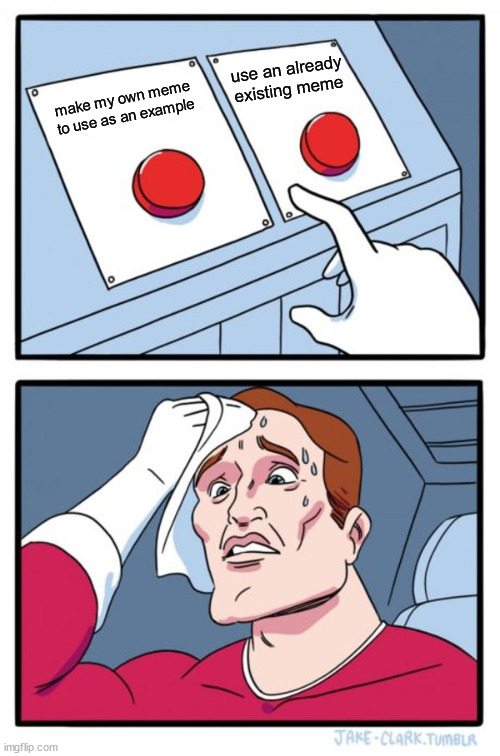Delia McCarthy was our library intern this semester. Thank you, Delia!
Are you interested in learning more about memes and using them in your teaching? This blog post will explain the ins and outs of creating and utilizing memes in academic life based on a workshop I gave as part of my internship. You can view the presentation here.
What Is A Meme?

A meme is a video, image, text, or behavior that spreads rapidly through the internet and is widely imitated. For the sake of this explanation, I will be focusing on memes that have text over a photo. These are the most common memes, as well as the easiest to replicate. There are different versions of memes, some with drawn characters, known as rage comics, and some with words over photos or images. There are also songs that are considered memes, such as ‘Nyan Cat.’ The easiest memes to create are text over image memes, as they come with a template that is easy to follow, and are already known by people.
If you’re curious about memes, I recommend using knowyourmeme.com to find and learn more about memes. A word of warning; knowyourmeme.com is not picky about the content it hosts and some of it will be inappropriate for the classroom. However, knowyourmeme.com is a good resource and has unbiased information about the history of almost every meme created. It is also regularly updated.

You may be wondering why memes matter enough that I was allowed to create a blogpost about them. Well, firstly, they are relatable to many people through their nature as viral content, and they can be used to garner attention. They can also be used as a method of communication; some scientific facilities have even used memes to quickly convey interesting facts to their patrons. Lastly, they are entertaining and can make the process of trading information and learning fun.
In my opinion, it is important to remember that people will enjoy memes, except those created by corporations or businesses. Making the creation of memes monetary is not fun for people and will lead to backlash. However, as an educational institution your contribution will be seen as positive and helpful, especially if you use memes that were created about ten years ago that people feel nostalgic for.
The issue of copyright may have occurred to you by now; I can inform you that as an educational organization your usage of memes should fall under fair use, but the nature of memes is fluid and so understanding copyright is difficult. You’ll have to do it on a case by case basis.
Creating Memes
It is easiest to create the text over image memes because they come with a template that is easy to follow and are already known and enjoyed by people. Creating a meme from scratch can be done but it’s a lot harder and less likely to gain popularity.


It is easiest to create the text over image memes because they come with a template that is easy to use. Creating a meme can be done on imgflip.com/memegenerator, a website that hosts a huge database of meme templates that you can use. It’s important to know the context of the image you’re using, and as I said that can be done by using knowyourmeme.com. It can even be fun once you’re used to it!
Finally, a word of warning. Memes are fun and enjoyable, but they can also be used by groups as racist dogwhistles and other symbols of negative meaning. These can be very subtle and are hard to track down. Just be careful, do your research on memes, and be aware that no one has knowledge of every meme out there. It’s okay to be a little confused!

1 thought on “Memes: What they are & how to use them (responsibly)”